Remember when garages were actually used for storing things other than cars? Back in the ’70s, every family garage was like a time capsule of American life, filled with tools, toys, and treasures that somehow all shared one common trait: a generous coating of rust. It didn’t matter if you lived in humid Florida or dry Arizona—that orange patina found its way onto everything, turning ordinary household items into archaeological artifacts of suburban life.
1. The Metal Toolbox with the Broken Latch
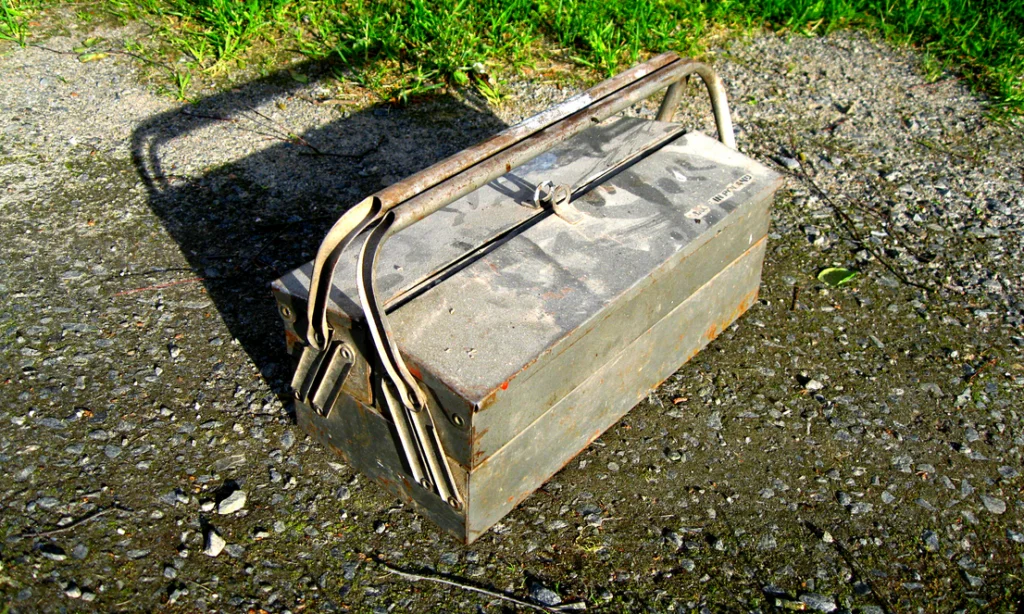
Every dad had one of those red or blue metal toolboxes that looked like it survived World War II, complete with multiple fold-out trays and compartments for every conceivable widget. The latch never quite worked right, usually held shut with a screwdriver wedged through the handle or a piece of electrical tape that had seen better days. Inside, you’d find a jumbled mess of rusty screws, bent nails, and at least three broken flashlights that nobody ever threw away. Today, Creative Safety Supply has some essential tips for storing your most important tools in a handy box.
The toolbox itself was a monument to rust, with orange spots blooming along every edge and corner like some kind of metallic disease. Dad would curse under his breath every time he tried to open it, wrestling with the stubborn latch while muttering about “planned obsolescence.” Yet somehow, this rusty relic contained the solution to every household crisis, from squeaky hinges to loose cabinet doors.
2. Folding Aluminum Lawn Chairs with Webbed Seats
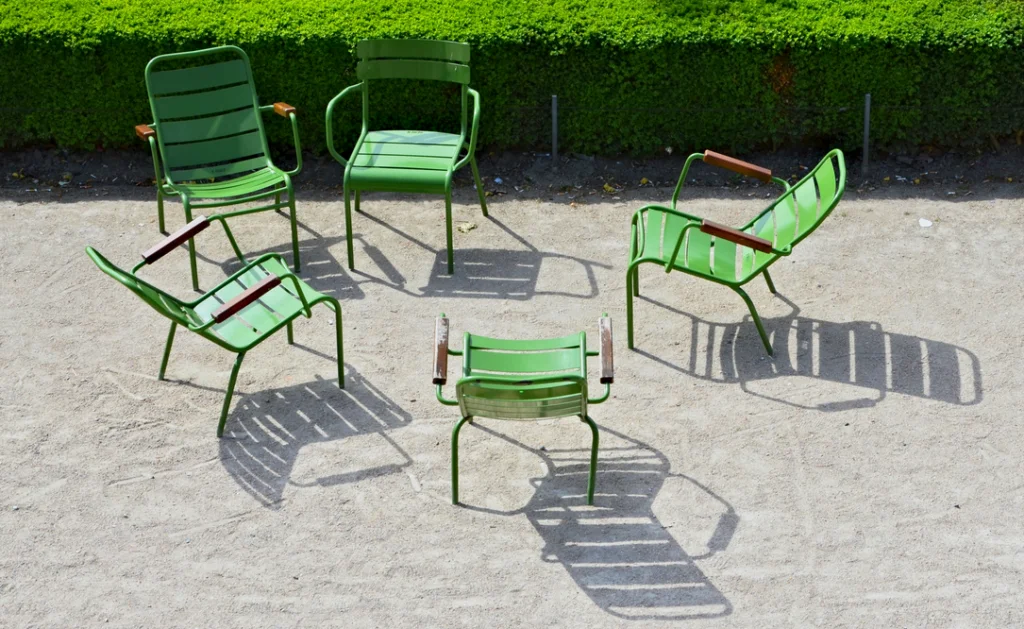
Those iconic lawn chairs with the woven plastic strips in avocado green, orange, or that particular shade of yellow that screamed “1970s” were garage staples across America. The aluminum frames started showing rust spots within their first summer, usually around the rivets and joints where water collected after every rainstorm. By their third season, they looked like abstract art pieces, with rust bleeding through the faded webbing in artistic patterns. Phaidon asserts that this simple yet familiar piece of lawn decor matters quite a lot to this day.
The chairs folded flat for “easy” storage, though the mechanism usually required the strength of a professional wrestler and the patience of a saint. Everyone had at least four of them stacked against the garage wall, waiting for the next backyard barbecue or camping trip that never quite materialized. Despite their rusty appearance, these chairs were practically indestructible—they’d outlast the garage itself, probably still standing when archaeologists excavate suburbia centuries from now.
3. The Rusty Bicycle That Nobody Rode Anymore
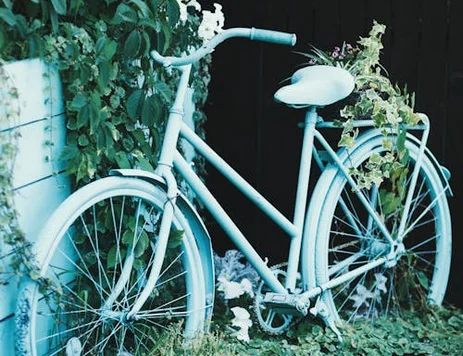
In the corner of every ’70s garage stood at least one bicycle that had seen better days, usually a Schwinn Stingray or similar model with a banana seat and sissy bar. The chrome had long since given way to rust, particularly on the handlebars and chain, creating a mottled pattern that told the story of countless rides through puddles and summer storms. The playing cards that once made motorcycle sounds in the spokes had either fallen out or deteriorated into sad, weathered fragments. If you have one of these, Popular Science has some insights into restoring that bike to be roadworthy again.
This wasn’t just any bike—it was a monument to childhood adventures, first crushes, and the freedom that came with two wheels and a vivid imagination. Parents couldn’t bring themselves to throw it away because it represented so much more than transportation; it was a time machine covered in rust. The tires were flat, the chain was seized, and the seat was cracked, but somehow it still held the promise of adventure, even if that adventure was now limited to serving as a conversation starter during garage sales.
4. Coffee Cans Full of Rusty Nails and Screws
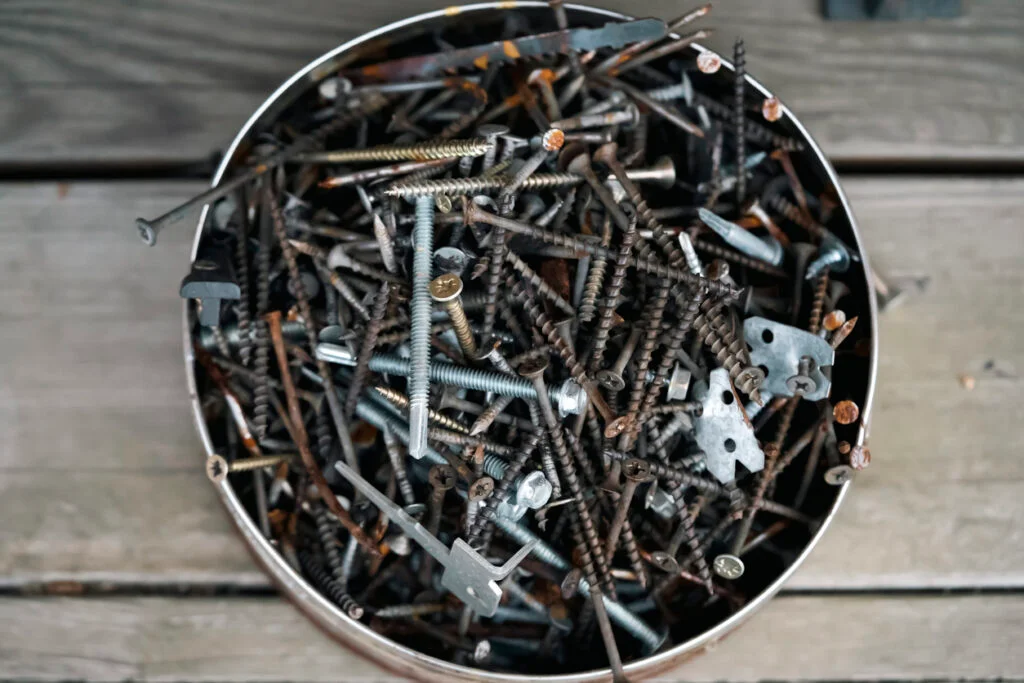
Maxwell House and Folgers coffee cans were the unofficial organizational system of the 1970s garage, repurposed into storage containers for every conceivable piece of hardware. These metal cans, with their distinctive labels slowly peeling away, contained collections of nails, screws, washers, and mysterious metal objects that defied identification. The contents rattled like a percussion section whenever someone moved them, creating a symphony of suburban industry.
Inside these cans, rust was the great equalizer—shiny new screws mingled with nails that looked like they’d been salvaged from a shipwreck. Dad could spend twenty minutes digging through one can, looking for exactly the right size screw, while muttering about the need to “organize this mess someday.” The irony wasn’t lost on anyone that these containers, meant to bring order to chaos, had become rusty chaos themselves, with contents that had fused together into unrecognizable metallic sculptures.
5. Garden Tools Hanging on Pegboard
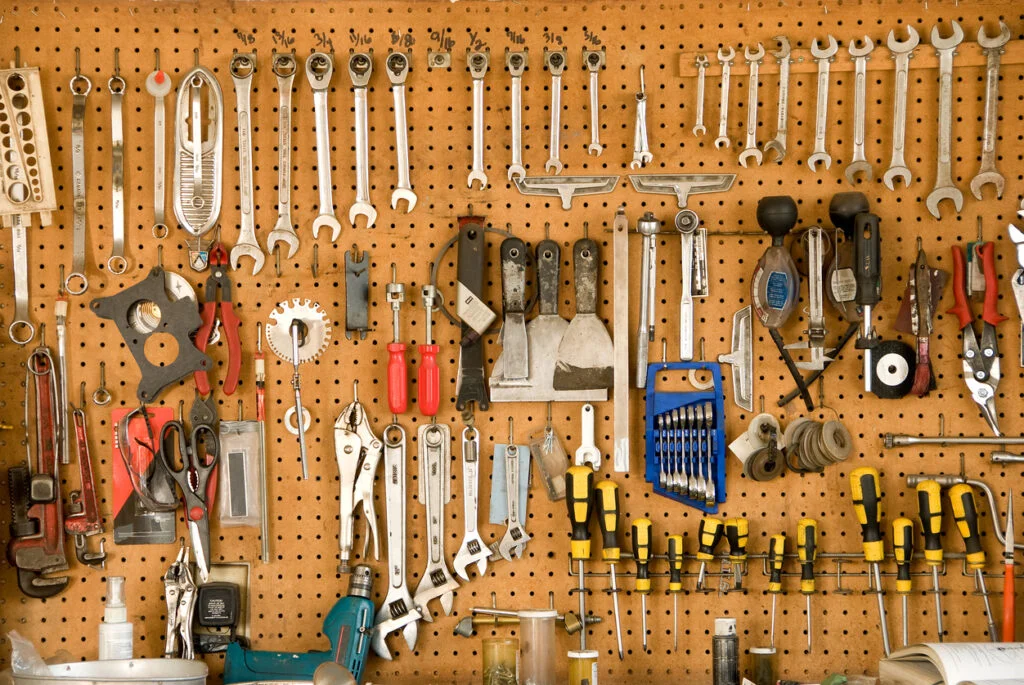
The pegboard system was supposed to be the height of garage organization, with each tool having its designated outlined space like a suburban crime scene. Rakes, hoes, shovels, and pruning shears hung in neat rows, their metal parts slowly surrendering to the relentless march of oxidation. The pegboard itself was usually that institutional beige color that seemed designed to show dirt and rust stains to maximum effect.
These tools had seen action in countless weekend warrior battles against crabgrass, dandelions, and the neighbor’s encroaching hedge. The wooden handles were smooth from years of use, but the metal parts told a different story—rust accumulated in every crevice, turning sharp edges dull and clean lines jagged. Yet these battle-scarred veterans were ready for duty at a moment’s notice, rust and all, because a rusty shovel still dug holes, and a corroded rake still gathered leaves.
6. The Lawnmower That Required a PhD to Start
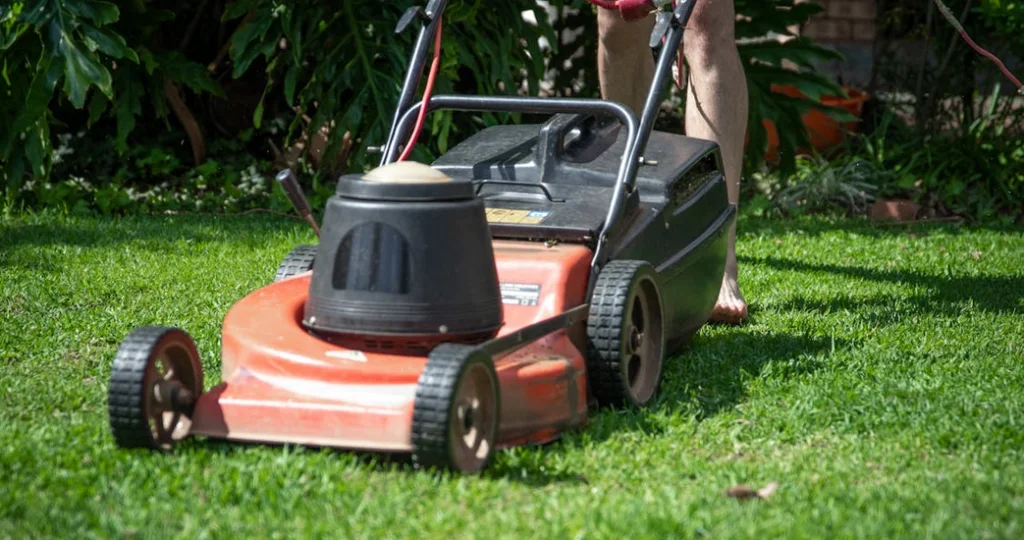
Every ’70s garage housed a push mower that had more personality than some family members, usually requiring a specific combination of prayers, profanity, and mechanical manipulation to coax into life. The pull cord had been replaced at least twice, the air filter looked like it had been through a dust storm, and rust decorated the deck like abstract expressionist art. Starting this beast was a weekend ritual that involved more ceremony than a religious service.
The mower’s engine was held together by determination and rust, with bolts that hadn’t been properly tightened since the Carter administration. Oil leaked from mysterious locations, creating rainbow puddles on the garage floor that nobody ever cleaned up properly. Despite its decrepit appearance and temperamental nature, this rusty warrior could still cut grass—eventually—after appropriate sacrifices were made to the lawn care gods.
7. Christmas Decorations in Cardboard Boxes

Those soggy cardboard boxes labeled “Xmas Stuff” in mom’s handwriting contained the family’s entire holiday spirit, compressed into increasingly damp storage containers. The outdoor lights, carefully wound around pieces of cardboard the previous January, had somehow tangled themselves into impossible knots and developed a healthy coating of corrosion on every connection. Ornament hooks had fused together into rusty metal sculptures that defied separation.
The artificial tree, disassembled and crammed into boxes never quite large enough, shared space with garlands that had seen better decades and extension cords that sparked with holiday magic—and occasional electrical shorts. Every December brought the same ritual: hauling these boxes from the garage, opening them with the same mixture of hope and dread, and discovering that rust had claimed another year’s worth of decorations. Yet somehow, Christmas still happened, rusty lights and all.
8. Sports Equipment from Abandoned Hobbies

The corner near the workbench held the graveyard of good intentions: tennis rackets with broken strings, golf clubs that hadn’t seen a fairway since Nixon was president, and roller skates that were more rust than metal. These items represented the enthusiastic embracing of new hobbies that lasted exactly as long as the initial equipment purchase. The badminton set was missing half its birdies, the croquet mallets had loose heads, and the volleyball net had more holes than Swiss cheese.
Each piece of equipment told a story of weekend ambitions and Monday reality checks. The fishing tackle box contained lures so rusty they looked like abstract art, and reels that hadn’t turned smoothly since the bicentennial. Yet nobody could bring themselves to throw these things away because they represented possibilities—the eternal hope that someday, someone would dust off that tennis racket and remember why they loved the game in the first place.
9. Paint Cans with Permanently Sealed Lids
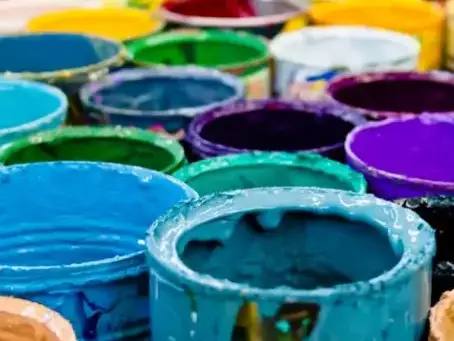
Shelves lined with paint cans created a rainbow of home improvement history, each container representing a room makeover or weekend project from years past. The metal cans had rust rings around their bottoms where moisture had collected, and their paper labels were faded beyond recognition. Opening these cans required industrial-strength determination and usually resulted in discovering paint that had separated into layers resembling geological strata.
These paint cans were time capsules of decorating trends: avocado green from the kitchen renovation of ’73, harvest gold from the living room makeover of ’75, and that orange shag carpet color that seemed like such a good idea at the time. The brushes stored with them had turned into abstract sculptures, bristles permanently fused with dried paint and rust from their metal ferrules. Yet every homeowner held onto these relics, convinced they’d need “just a touch-up” someday.
10. Automotive Fluids in Mystery Containers

The automotive section of every ’70s garage looked like a chemistry lab run by absent-minded professors, with half-empty containers of motor oil, antifreeze, and brake fluid scattered across makeshift shelves. Many of these containers had lost their original labels, turning routine maintenance into a guessing game of potentially catastrophic proportions. The metal containers had developed rust patterns that looked like modern art, while plastic jugs had turned cloudy with age and uncertain contents.
WD-40 cans multiplied like rabbits, each one slightly more corroded than the last, with spray nozzles that worked about as well as a chocolate teapot. The funnel had disappeared into the automotive Bermuda Triangle, forcing improvisation with folded cardboard and crossed fingers. Despite the rust and uncertainty, these mysterious fluids were treated like precious elixirs, too valuable to throw away but too scary to actually use without extensive research and perhaps a will update.
11. The Shop Radio That Picked Up Three Stations

Every garage had a radio that looked like it had survived both world wars and possibly the invention of electricity itself, usually perched on a shelf where it collected dust, cobwebs, and a healthy coating of rust on its antenna and speaker grille. This faithful companion could pick up exactly three stations: the local AM talk radio, a country station that faded in and out with the weather, and something that might have been music but could have been interference from outer space. The volume knob worked in mysterious ways, with settings ranging from “barely audible” to “wake the neighborhood.”
This rusty sentinel provided the soundtrack to countless weekend projects, broadcasting everything from baseball games to weather reports that were wrong more often than they were right. The cord was held together with electrical tape in at least four places, and the plug sparked occasionally, but it kept playing through power outages, thunderstorms, and the occasional flying wrench. It was more than a radio—it was a member of the family, albeit one that occasionally shocked you when you tried to change the station.
12. Exercise Equipment from Fitness Fads
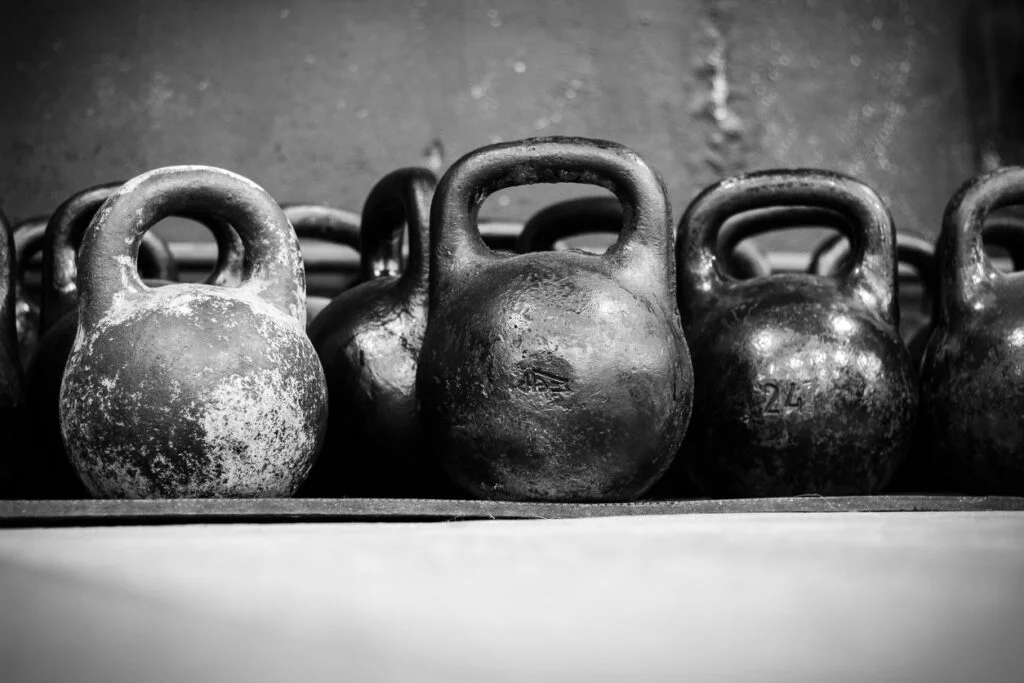
The corner near the garage door served as a monument to physical fitness aspirations, housing equipment that represented every exercise craze that had swept through suburban America. The chest expander with its rusty springs looked like a medieval torture device, while the exercise bike’s odometer was permanently stuck at 2.3 miles—the total distance anyone had ever ridden it. Weight sets consisted of concrete-filled plastic discs connected to bars that had more rust than a shipwreck, and the jumping rope had handles that left orange stains on your palms.
These fitness relics represented New Year’s resolutions that lasted about as long as leftover Christmas cookies, gathering dust and rust in equal measure. The exercise mat had mysterious stains and the structural integrity of wet tissue paper, while the instruction booklets had long since yellowed and curled at the edges. Yet hope springs eternal in the suburban breast, and these rusty reminders of good intentions remained, waiting for the day when someone would rediscover their commitment to physical fitness—or at least clear them out for a garage sale.
13. Garden Hoses Coiled Like Sleeping Snakes
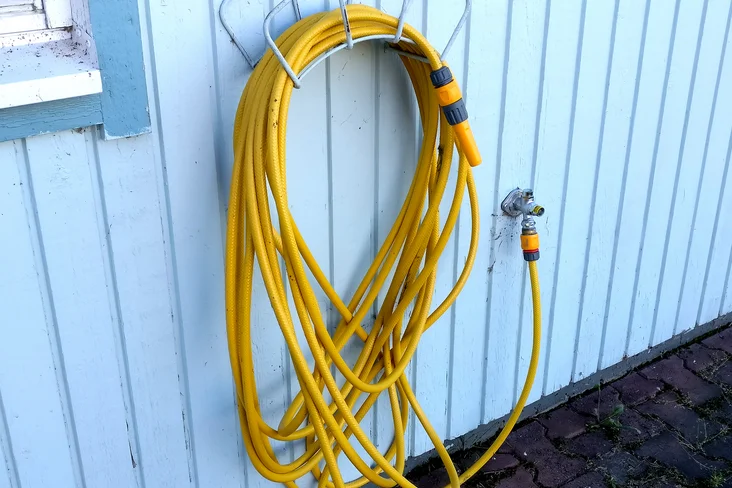
The garden hose, that essential tool of suburban irrigation, lived its life coiled against the garage wall in perpetual readiness for duty. These rubber and metal serpents had seen everything: watering flower beds, filling swimming pools, washing cars, and settling neighborhood water fights that sometimes escalated into full-scale suburban warfare. The metal fittings had developed a patina of rust that made them look like archaeological artifacts, while the rubber had that particular aged flexibility that suggested it might split at any moment.
Connection was always an adventure with these venerable hoses—the threads never quite matched any sprinkler or nozzle, requiring the application of considerable force and occasional percussive maintenance. The coiling technique was passed down through generations like a sacred ritual, though no one ever achieved the perfect spiral shown in garden magazines. Despite their rusty fittings and questionable water-tightness, these hoses were essential equipment in the suburban arsenal, ready to transform any yard into a verdant paradise or at least wash the mud off the family dog.
Walking through a ’70s garage was like taking a tour through the Museum of Suburban Archaeology, where every rusty relic told a story of weekend projects, family adventures, and the eternal optimism of homeownership. These weren’t just objects gathering dust and oxidation—they were the props in the great suburban theater, the tools and toys that defined a generation’s relationship with their homes and hobbies. The rust wasn’t just corrosion; it was patina, the earned weathering that came from a life well-lived and a garage well-used. Looking back, those rusty treasures represented something more valuable than their original price tags ever suggested: they were proof that we lived our lives fully, enthusiastically embracing every hobby, project, and possibility that came our way. Sure, most of those tennis rackets never saw another match, and those paint cans never got reopened, but they represented the beautiful optimism of believing we could do anything, fix anything, and create anything we set our minds to. In a world of planned obsolescence and disposable everything, there’s something almost noble about those rusty survivors that refused to give up, even when we did.


